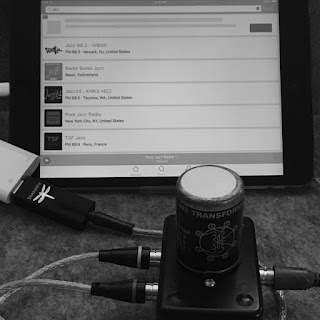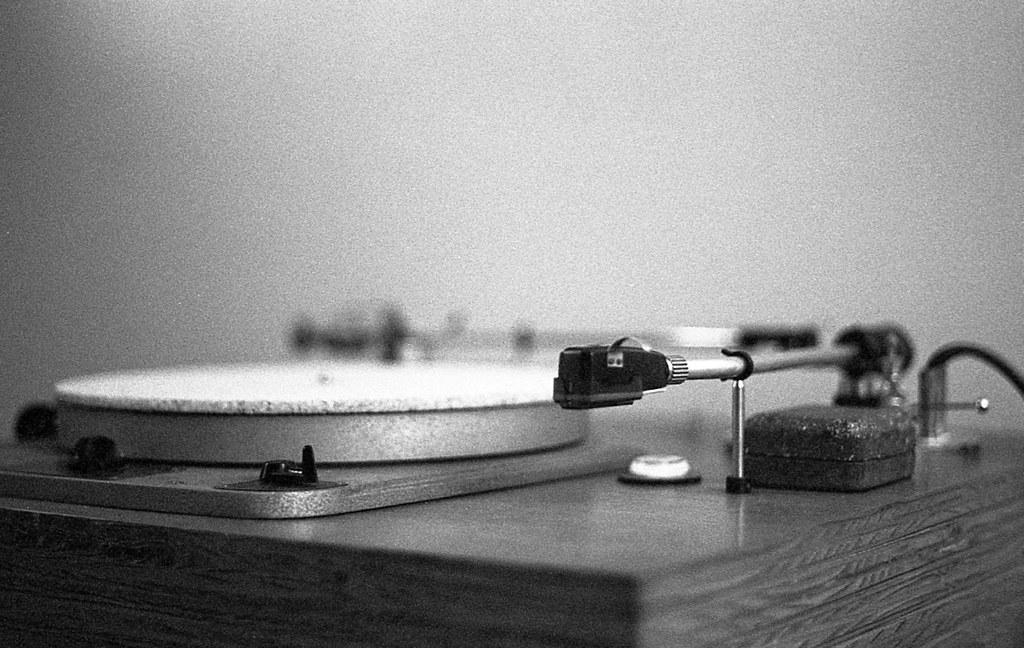July was a hectic month - four 4th of July concerts with Harrisburg Symphony + two concerts at the Shippensburg Summer Music Festival. It was a welcome respite to receive an invitation from
Joe Roberts to meet him at his mom's house in South Philly after I was done with all those gigs.
 |
Leica II + Summitar 50mm f2
Ilford FP4+ in Kodak HC110 |
He gave me a tour of his old neighborhood, pointing out areas where he started his archeological expeditions as a kid. For lunch we stopped by this hoagie shop for really great Philly cheesesteaks.
It was very interesting to listen to his recollection of South Philly as a kid, and how the area continues to evolve as people of different ethnicities, socio-economic and cultural backgrounds come and go.
Before I-95 swarmed with rush hour traffic, I had to head back north with this box filled with horns from Joe. I didn't envision writing about 1" format horns again since I posted this blog entry last February. But after spotting the Azzolina KS12024s, it was hard to pass up this opportunity. Meanwhile, this post will focus only on the Parts Express horns.
Testing

I used Altec 802 1" compression drivers fitted with
GPA 34852 16 ohm diaphragms mounted on top of Altec 614 cabinets loaded with 414A woofers (running full range) with the crossover below tying things together. All listening was done in stereo in the
man cave.
 |
| High pass @ ~ 2500 Hz |
I used these two horns as references and for the first time I was able to convince my wife, Tish, to indulge me with her sonic impressions.
Altec 32C

Tish and I love this descendant of the old school WE32A horn. She describes it as sublime.😉
Emilar EH500


This is my favorite horn from the 70s. It was designed by Jonas Renkus who worked with John Hilliard at Altec Lansing.
Parts Express Specials
Round 1
(deeper/longer exit Altec 802)

 |
+ Altec 802 |
There is an ongoing thread at Hi-Fi Haven about cheap horns where this particular horn/waveguide was mentioned. Its specs are listed as a 600 Hz, 10" x 14" exponential horn waveguide with a 90° H x 40° H dispersion pattern, made out of heavy ABS plastic. Price: $12.88/ea.
Sound
Tish: Not bad, but not as lush sounding as the Altec 32C. It will eventually hurt my ears.
JE: Tonal balance is reminiscent of the Emilar EH500. However the sound gets congested with complex musical passages (especially at higher SPLs) which can cause fatigue during long-term listening.
Dimensions: 10 3/8" W x 5 7/8" H x 6" D
Dispersion: 90°H x 40°V
Cut off frequency: 2000 Hz
Price: $4.48/each
I had to DIY adapter plates to mount the 802 drivers.
Sound
Tish: Harsh and shouty👎👎👎
JE: Sounds better disconnected. What were you thinking J-Rob???🤣
Faital Pro revisited
Dispersion: 80° H x 70° V
Dimensions: 7" W x 4 3/4" H x 3 5/8" D
Material: Metal
Price: $67/each!!!
Sound
Tish: I like this best among the three - easier on the ears compared to the other two, but not even close to the 32C.
JE: I am less impressed this time around despite the clean sound. It has less congestion, harshness and tizz than the
B52/QSC clone 299-2303. But the presentation still falls far short of what I hear live. With the recent
price increase, I can
no longer recommend this unit.
Gentlemen,
Very interesting experiments with different types of horns and waveguides (the B-52 1" QSC clone is a waveguide), both vintage and more recent designs.
The 802D with the B-52 1" might not be an optimal combination. The original QSC PL-000446GP was designed by Mark Engebretson, former VP of Engineering at QSC, to be used with Celestion compression drivers. From the many measurements available online it's obvious this waveguide performs best with modern, pancake style compression drivers, that have a short exit instead of the deeper/longer exit of most vintage drivers like Emilar, Altec etc.
You might try B&C, Celestion, Beyma, BMS and similar 1" drivers.
There's much more to the underlying physics, but it should come as no surprise the EH-500 and Altec 32A/B do indeed sound wonderful with the vintage drivers. The gradual expansion of the wavefront from driver diaphragm to horn mouth is (almost) perfect. On the other hand, a pancake driver behind an oldskool horn, with a few exceptions, is unlikely to yield spectacular results.
 |
| Altec 802 (left) + Renkus-Heinz SSD1400-8 (right) |
The only pancake type (short/fast exit) 1" compression driver I have on hand is a pair of Renkus-Heinz SSD1400-8. This is a smaller magnet version of the
SSD1800, which I got to know quite well in the
attic. Hence, I had a gut feel that I was going to learn something important from @ARX. So the SSD1400-8 was pressed into service for another round of listening.
Round 2
(short/fast exit Renkus-Heinz SSD1400-8)
+
Renkus-Heinz SSD1400-8
With the short exit R-H SSD1400-8 mounted, this waveguide was transformed. Although not quite on the same level, the sound now more closely resembles the Altec 802/Emilar EH500 pairing. The congestion I heard in Round 1 is gone with a substantial gain in midrange lucidity. Long term listening fatigue is no longer an issue since the sound has opened up with a nice airiness to it. 👍👍👍
part# 299-522
+
Renkus-Heinz SSD1400-8
This horn became a lot more listenable with the SSD1400-8 mounted behind it. It sounded even better crossed over @ 5kHz. Detailed and airy but the midrange isn't quite as vivid as the
B52/QSC clone/299-2303. For the record,
Community compression drivers are also short/fast exit (pancake) designs.
+
Renkus-Heinz SSD1400-8
Parts Express Horn Wrap
Two important lessons learned:
1. Thank you very much @ARX for enlightening me! Otherwise, I would have joined the ranks of fake news bloggers. 🤣
2. My preference for matching harmonically rich-sounding components will always entail a classic pairing of units that are long out of production and are becoming more unaffordable as the years go by...😞

















































